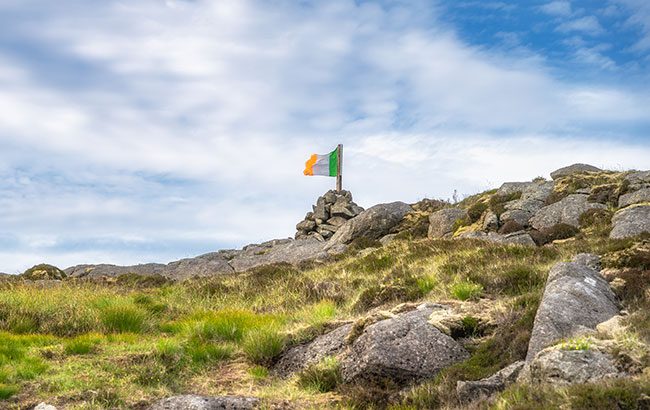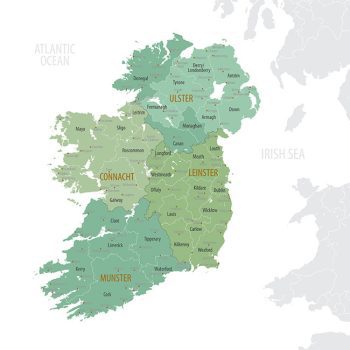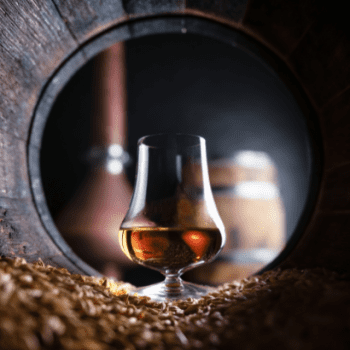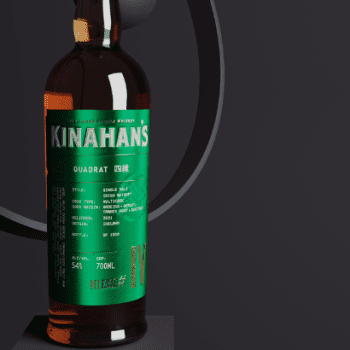Would regional identities bolster Irish whiskey?
By Georgie CollinsThe Irish whiskey industry is booming, and some people suggest it should develop regional identities to further cement its reputation. But would such a move clamp down on the sector’s freedom to create exciting spirits?

*This feature was originally published in the September issue of The Spirits Business magazine.
Irish whiskey has traditionally presented itself as a unified category, characterised as smooth, triple-distilled, and broadly approachable.
But a quiet shift is under way among distillers, critics, and consumers alike, with whispered conversations about geography, provenance and regional character surfacing. In those conversations, a compelling question has been raised: is Irish whiskey ready for regional identity, and if so, who gets to draw the map?
Scotch whisky regions, as we understand them today, were formalised in the 2009 Scotch Whisky Regulations, though the concept dates back to the Wash Act of 1784. That legislation split Scotland into Highland and Lowland regions with differing distilling practices in each direction. By 1909, the Royal Commission had identified Highlands, Lowlands, Islay, Campbeltown, and Speyside as distinct whisky areas.
While these regions don’t strictly define flavour, nor have the backing of a geographical indication (GI), they’ve proven incredibly effective as educational and marketing tools, offering newcomers to the category a starting point to explore Scotch’s diversity, and act as helpful signposts through its multifaceted landscape of flavour, tradition and style.
Push certain regions
This value has been seen first-hand by Dawn Davies, buying director at The Whisky Exchange. “With Scotch, people had ideas that were linked with certain big distilleries that they liked, and the myth [that region equals flavour] grew,” she says, noting how Islay is still heavily associated with smoky flavours, while Speyside’s Sherried reputation also remains strong. As such, she says “you do see sales increase when you push certain regions”.
But Ireland has never operated under any formal regional structure for its whiskey making, and geography has played little to no part in categorising character in the sector. But if Scotch whisky’s regional system offers such powerful educational and marketing benefits, should Irish whiskey follow suit?
Ireland’s whiskey industry is in the middle of a major resurgence, growing from just two distilleries in the 1970s to approximately 50 today. With that growth comes increasing diversity in style, technique and provenance – exactly the kind of complexity consumers often struggle to navigate without some kind of framework. So, just as Scotch regions act as educational markers, regional classifications in Ireland could help new drinkers make sense of the category by providing entry points and stylistic expectations tied to place.
Shane McCarthy, co-founder of independent Northern Ireland-based whiskey bottler Two Stacks, says the idea of regional identity in Irish whiskey is a compelling one: “There is certainly potential for regional storytelling to enhance the category, especially for consumers who associate provenance with authenticity.” He explains that while mash bill, distillation equipment, and maturation all play a bigger role in defining flavour – much like in Scotland – he has seen emerging regional styles in the pre-existing provinces of the island. Ulster shows bold, grain-forward profiles with peat and indie cask finishes; Leinster is rooted in pot still heritage and mash bill experimentation; Munster, especially its coastal areas, excels in single malts; and Connacht offers hybrid styles with strong grain-to-glass and heritage cask connections. Yet McCarthy clarifies: “These are more creative themes than geographical destinies. The danger with formal definitions is that they risk bottling a category that’s still in full bloom.”
James Doherty, founder of the Ardara Distillery in Donegal, has a more commercial perspective, saying driving regionality in his brand’s messaging was the only way of breaking out of the generic mass of Irish whiskey to create its own space to win in. “The fact that Donegal was famous for a particular type of taste lends itself to our core proposition that Donegal was once the Islay of Ireland – and could be again,” he says, adding that it is well documented that the palates of the people of Donegal are “conditioned” to a smokier spirit.
Despite the appeal, many experts urge caution against imposing Scotch-style regions on Irish whiskey, with McCarthy warning of the importance of avoiding a top-down, protectionist or rigid framework, particularly at a time when the category is rediscovering its roots. “Irish whiskey is being driven by individuals and collectives reviving old recipes and ideas, often in places with no continuous distilling history, so any regional story should come from the ground up,” he says.

Whiskey writer and historian Fionnán O’Conner is adamant that any attempt to impose regional boundaries would be “impossible to enforce” unless it occurred organically. “Telling people [what to do] is stifling to human creativity,” he says. “The Scottish whisky regions are the result of history. The difference in Ireland is that there was a regionality historically, in the sense that most of the grain whiskey came out of the north because that’s where the Industrial Revolution hit Ireland, but all those distilleries closed and that regionality collapsed in on itself. There wasn’t an attempt to prop it back up, and it’s too late to do that now,” he says.
He likens the fall of Ireland’s whiskey industry to the fate of Scotland’s Campbeltown region, which similarly buckled from 30 working distilleries in the late 19th century to just three today. But Campbeltown offers “just enough that there’s still a sense of place”, he says, adding there is a bright future for a sense of place in Irish whiskey, “but any map people could come up with would be fictional and unhelpful”.
This sentiment is echoed by author Dave Broom, whose 2022 book, A Sense of Place, argues place is not just about geography, but about people, process, memory and meaning. “The idea that regionality equals flavour is a false one,” he says, explaining that it is history and economics that typically dictate what becomes flavour. “Regionality came into focus when United Distillers – the precursor to Diageo – launched Classic Malts, and it was a useful way to sell the idea that whisky was made across Scotland in different styles. Then it somehow became gospel that because the Lowlands of Scotland were soft and rolling that the whiskies were soft and rolling,” he notes, giving Loch Lomond and Auchentoshan as examples as to why this is not the case. “So this shorthand began to build up, and that’s why I’m always leery about this idea of using regionality in a simplistic fashion.” However, he explains it does offer a launchpad for conversations about Ireland’s whiskeys and distilleries beyond just Dublin.
It seems, therefore, that there is no way in which the category could be defined geographically, lest it come at the expense of creativity and innovation. “Given how Irish whiskey is produced today, any attempt to define regions would likely be more arbitrary than natural,” rationalises Richard Ryan, CEO and co-founder of Drinksology Kirker Greer. “Regionality could only exist if distilleries collectively agreed on stylistic or production norms, which seems unlikely in a market driven by differentiation and innovation.”
While rigid region-mapping may be illogical, many believe a sense of place is still worth championing – just not in the form of strict borders. “I think that this is where my bridge exists between me saying [regions] don’t exist, and there being a really interesting way of dividing up a country into specific zones – and that is by looking at it from a cultural point of view, rather than flavour,” says Broom. “James Doherty is quite right to say there’s a Donegal whiskey. It makes a lot of sense – you can see that Donegal has incredible heritage of making poitín, and the style was always peaty because of the geography,” he explains. “A case can be made for reviving a lost history of whiskey-making in Donegal by following that old tradition.”
How to use history
The same, he says, applies to Mical Distillery in Galway, where distillers are reviving the recipes of their great-great-grandfathers who were once poitín makers in Connemara. “You can say there is genuinely history of a Connemara-style of whiskey, and you can say that there was undoubtedly a Dublin-style of whiskey in the 19th century, which would be single pot still. By using history, you can begin to say there were blocks of ways of making whiskey that were related to politics and economics, but also to culture.” This, Broom says, “allows you then to do a deeper dive into why Dublin whiskeys are different to ones made in Cork, for example”.
However, Broom warns against using regional identity as a limiting force: “What you can’t do is use it to then restrict diversity and experimentation or use it as a weapon to corral people’s idea of what the whiskey is.”
McCarthy echoes this: “Irish whiskey is already 32 counties strong, each with its own dialects, tones and traditions. Rather than drawing lines in the sand, we should be encouraging diversity of expression.”
Ultimately, Ryan says, the techniques that were once regionally influenced are today’s choices that are driven by brand style rather than geography. He says: “Fermentation times, distillation methods, and maturation approaches are all freely selected by each distillery, making regional patterns less relevant.”

If there has been one unifying thread in the conversations I’ve had on this topic, it’s that storytelling is key to Irish whiskey’s continued growth – not boundaries.
Davies argues that clearer flavour markers, such as pot still, grain, and single malt, are more helpful to consumers than regionality will ever be, and that re-educating consumers about Irish whiskey’s often mis-told history would likely form a better foundation for driving the category forward.
Doherty believes the concept could lend itself to helping drinkers, trade, retailers, and tourists to navigate a category and understand where all the original stories lie. He says: “So much of the Irish distilling history is retold with varying degrees of romance copy and hyperbole, and for the long-term success of the category it would benefit from doubling down on historically validated authenticity and leaning into the distillery’s origin story, sense of place, and distinctive DNA.”
O’Conner agrees. “We can do better with the storytelling. There’s a lot of just appallingly bad yarns promoted as history, and the time has come to call last orders on that across the industry, because that’s a real hangover from buying these cheap marketing spiels that are meant to sell some hook. Whatever the pitch to the consumer, it has to be real. It has to be authentic.”
Past, present and future
His belief is that set regions will not provide that authenticity or a true sense of place. Rather, that can be achieved with other authentic stories, whether they be about community, distillation style or mash bill. “There’s an enormous opportunity with these kinds of recipe traditions in Ireland to tap into that and to pull from place, from past, and from reinvention, and some have really hovered toward that,” he says.
This is what excites Broom about the category. “What’s happening in Ireland is not really a revival – it’s a reset. All of these distillers, whether they’re big or small, are looking at Ireland’s past, looking at what can grow, and looking at old recipes, and they’re saying, ‘what can Irish whiskey be?’, not copying what went before. They’re essentially starting afresh. And we’re now beginning to see some truly extraordinary whiskeys because of this. It’s one reason I don’t want Ireland to fall into same regional trap that Scotland did, because the field is so open these days, and that’s hugely exciting.”
Industry insights
Zak Oganian – CEO, Origen X Brands
How can Irish whiskey balance tradition with innovation to develop distinct styles?

“The future of whiskey lies in what the Irish are good at: celebrating authenticity for historic brands and cohesiveness for new brands, such as daring mash bills and inventive cask finishes paired with immersive, sustainability-focused tourism and science-backed authenticity. Being one of the very first whiskey brands to mature whiskey back in 1779, Kinahan’s Irish whiskey has focused its prominence on a new maturation ‘hybrid cask’ method, while Bagots Irish whiskey, founded in 1920 by the oldest wine merchant family, continues to pioneer unique and rare wine cask maturation.
“Incidentally, this is exactly what global consumers are now after, and by evolving through provenance, sensory storytelling, and ethical innovation, Irish whiskey can build tradition organically, honouring its revivalist roots while embracing modern creativity.”
What has been the biggest change you’ve seen over the past decade in the Irish whiskey industry?
“Over the past decade the Irish whiskey industry has undergone two distinct and defining phases of transformation. The first, spanning 2015 to 2021, was a period of energetic revival, marked by an explosion of new brands, bold creativity and renewed global interest. The second phase (2021-2024) represents a critical adjustment period. Here the market is now focused on sustainability, transparency and genuine consumer relevance. Kinahan’s perfectly illustrates this evolution as its initial growth was driven by the groundbreaking Kasc Project, which introduced hybrid cask maturation to the category. This established a clear identity in a crowded space. It was Kinahan’s strategic shift into production efficiencies and infrastructure investment that secured its resilience, fuelling continued growth and successful market expansion even through the challenging 2024-25 period. Today’s consumers want authenticity, taste complexity and enduring value.”
Related news
IWA launches ‘landmark’ tourism initiative for Irish whiskey
